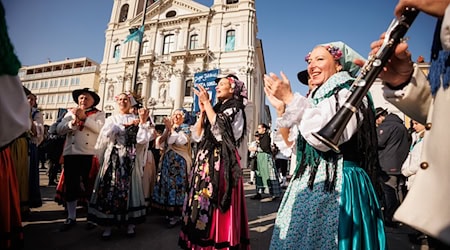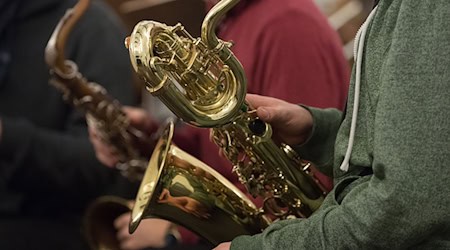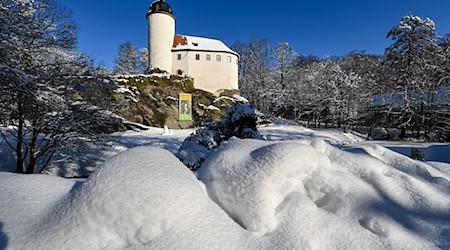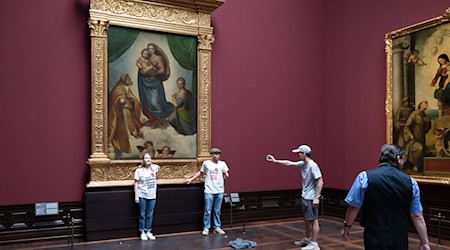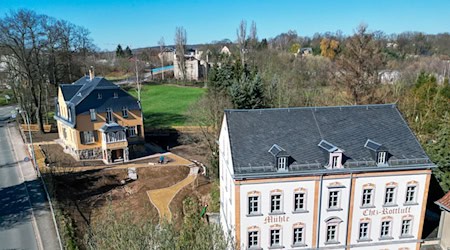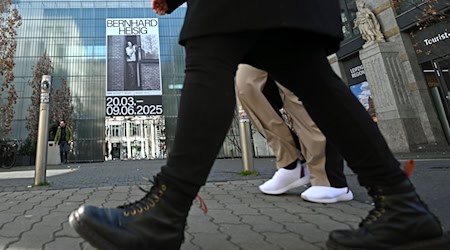A magnificent box made of rare stone or silver Christ Child figurines: at Christmas or the turn of the year, the Saxon electoral court was already giving precious gifts during the Renaissance. The gifts exchanged in Saxony's Green Vault treasure chamber provide a special tour for the senses during the festive season. "We have a whole series of objects like this, with stories to go with them," says Marius Winzeler, Director of the famous museum in the Residenzschloss. Among them are particularly precious exhibits that the electoral couple gave to themselves or their children, "especially from the late 16th and 17th centuries".
One of the earliest verifiable gifts dates from 1572. It is a lidded bowl made of shimmering green serpentine, a special stone. "It was so precious that the Dresden goldsmith Urban Schneeweiß had it set in pure gold," explains Winzeler. It is likely that the Electress Anna, a Danish princess at the time, gave the bowl to her husband August for Christmas. The gift, engraved with the coats of arms of Electoral Saxony and the Kingdom of Denmark, was soon placed in "secret safekeeping". "It was purely a decorative and display vessel."
In another display case are two naked boys, cast in silver, with golden halos, on pedestals. "These are Bornkinnel, as they say in the Erzgebirge and Lusatia, small statuettes of the Christ Child or the Child of the Nativity," explains Winzeler. "They were produced in large numbers for the court." For at least two generations, the Elector gave such figurines to his wife and children as gifts, "as a private object of devotion". Only two of these gifts from Johann Georg I from 1629 have survived. They are made of silver by master court goldsmith Daniel Kellerthaler, cost eight thalers and, according to Winzeler, ended up in the treasury at some point. "They are first documented in the inventory of valuables in 1725."
In contrast, the four "house cups" made of pure gold that Elector Johann Georg I gave to his sons on Christmas Eve were much more expensive. "The invoice dates from 1635," says Winzeler. The Dresden goldsmith Abraham Schwedler made the vessels, each 14 centimetres high, from coins; they cost 3380 thalers. The gift came with the stipulation that they would be returned when the line of the three younger brothers, the "Sekundogenitur", dried up. One hundred years later, this was the case - and the Electors' cup completed the quartet in the display case.
The famous spherical clock in the shape of a rectangular tower, however, was a New Year's gift. Christian II actually had it made for the emperor, as Winzeler reported. But because his wife was very sad about it, he commissioned another one for her. "She was totally enthusiastic and infatuated with these automata and had a very important collection herself."
A magnificent jewelry box that Christian I received from his mother-in-law on New Year's Day 1590 is just as much a Christmas object as precious reliefs made of silver or gold with biblical depictions - or unique ones made of sandstone. The relief by Freiberg sculptor Samuel Lorentz depicting the birth of Christ and the adoration of the shepherds is protected from the light in the miniature cabinet. "It was actually created for a baptismal font in St. Peter's Church in the city and already caused a sensation during its time there," says Winzeler.
And: "People were fascinated that it was possible to make something so delicate out of Saxon sandstone." Lorentz carved it out of the finest material he could find "and even modeled it partly with sandstone powder". He was persuaded to give it to the Elector. At the end of 1590, it was inventoried in the princely Kunstkammer. "By whom is a little unclear."
Winzeler is now hoping for further identifications as part of the inventory catalog project on goldsmiths' art. To this end, files, invoices and correspondence stored in the State Archives are being combed through. "Our inventory rarely contains anything as concrete as this." The publication is due to appear in 2024, covering all 350 or so goldsmith objects in the collection. "Only the pure ones without stones."
Copyright 2023, dpa (www.dpa.de). All rights reserved


